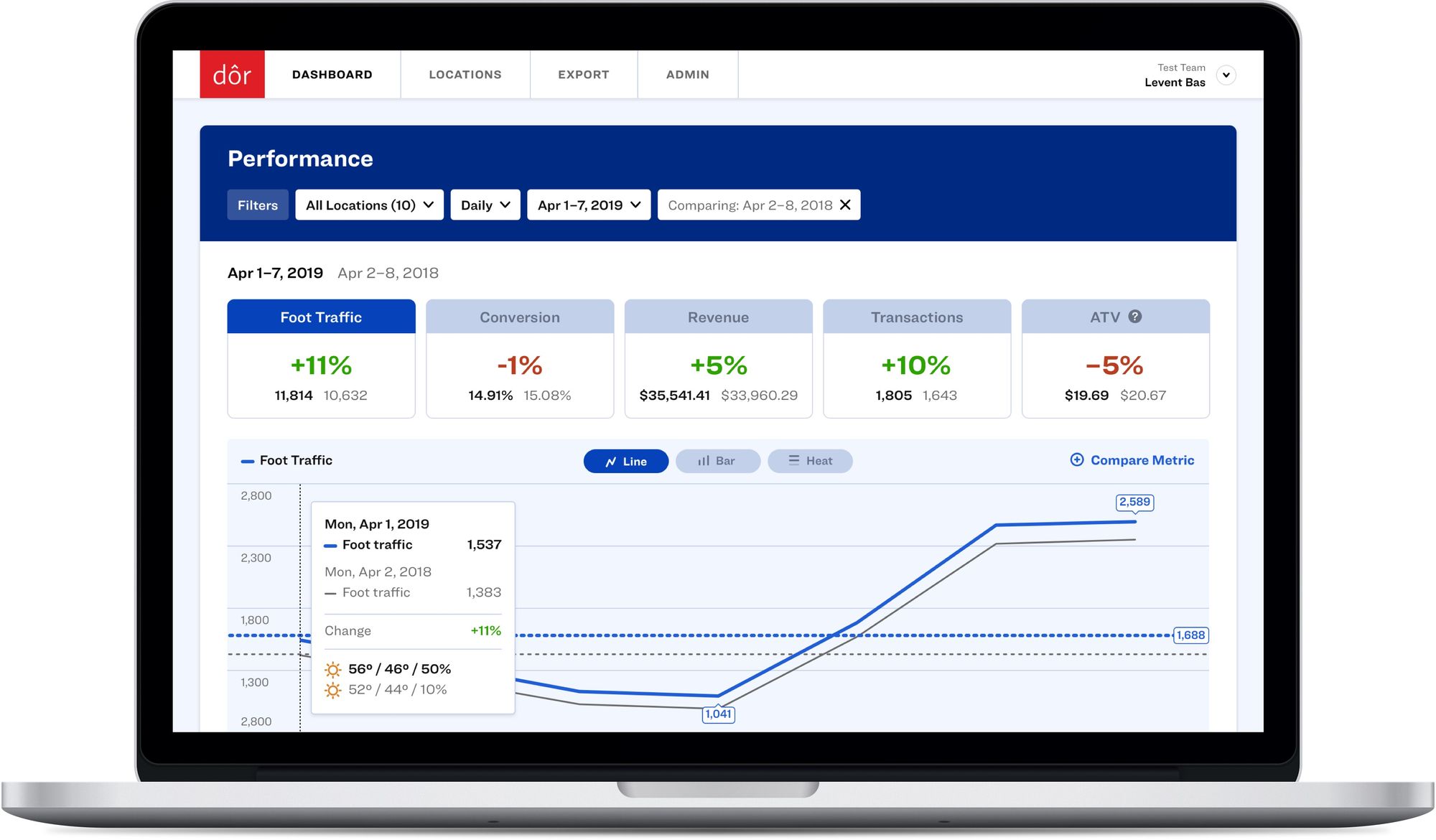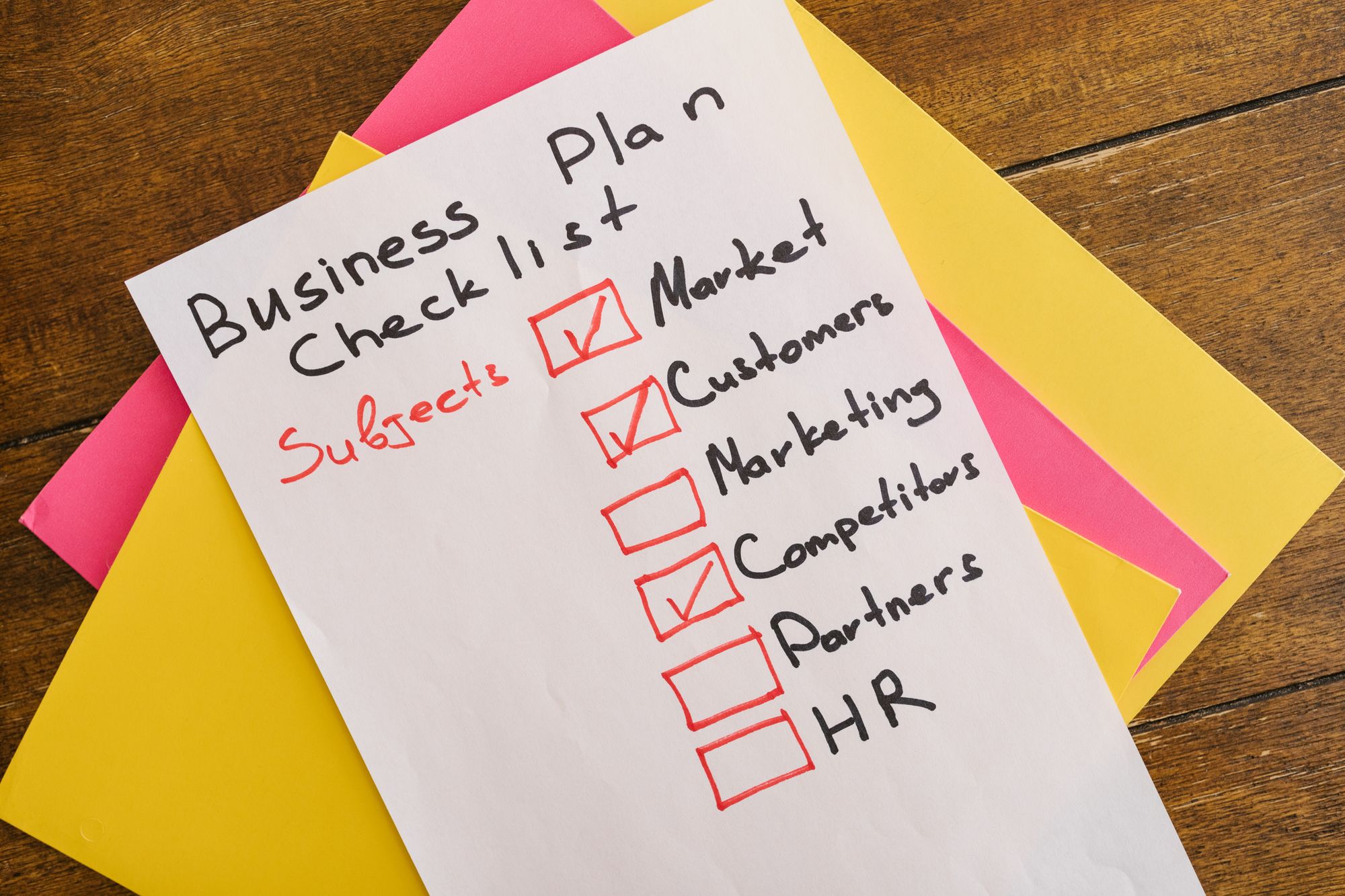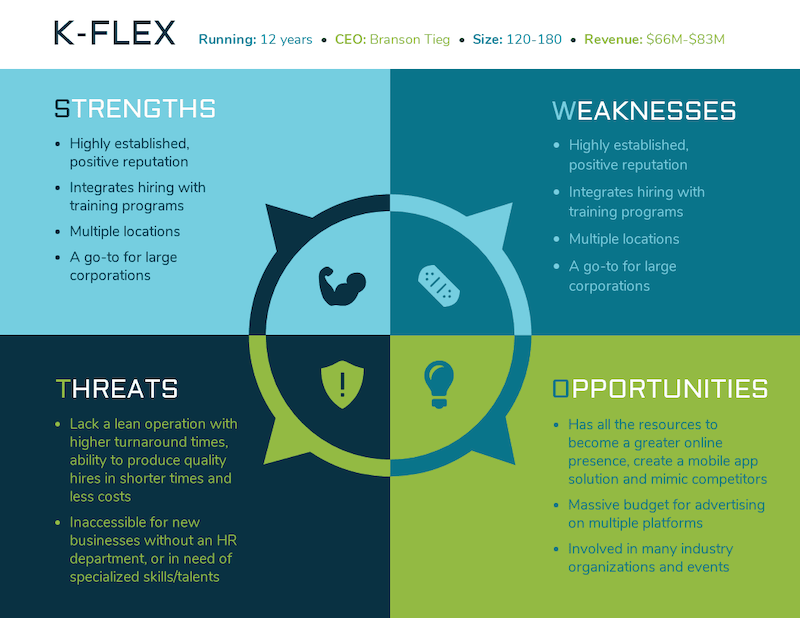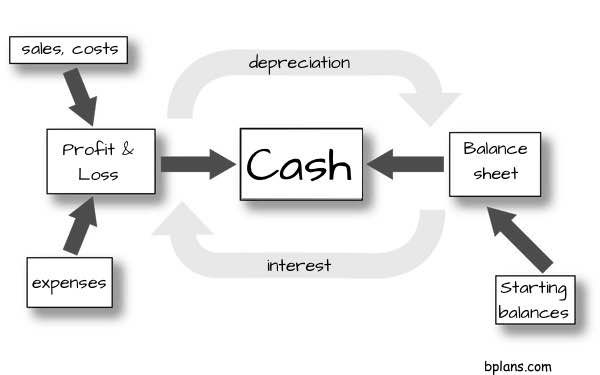Running a solid business can be overwhelming. The initial thoughts of how you will succeed in a competitive world need advanced planning and feasible actions.
Commonly, the retail business owner is too busy to focus on the product, the pricing, and other essentials, the primary need to plan in advance is neglected.
This neglect results in poor management of the supply chain, misuse of the limited resources, and in the end, losing the profit margin of the business that was so hardly built. To avoid this undesirable outcome, we’ll take a look at the most practical and organized way to write your retail business plan.
When you think about setting a retail business plan for your business, there are a few strong reasons why.
Let’s meet two retail professionals with different needs. We know that a suitable business plan format will develop by knowing their specific needs.

Did you know that a 1% increase in your store’s conversion rate can mean a 10% increase in revenue?
Click here to discover how Dor can help you understand your foot traffic data and make more profitable business decisions.
Ready to purchase? Complete your purchase in just minutes!
Meet Ian and Julie before writing your business plan
Meet Ian.
His family has been running a retail store for more than 15 years. They know about their products and generate sales. However, by the year-end, they don't make enough profit. That’s why they need to replan their business structure for more profit.
Or, meet Julie. She is planning to open a brand new retail store, and she does not have any prior experience in retail. Thus, she wants to know the basic outline so she can cater to her business expectations.

No matter what triggers the interest, a well-prepared, and indeed, an executed business plan will change the course of your retail business. The business plan is essential in defining short-term and long-term business goals and how to succeed. It also gives you a perspective on your business besides the costs and effects of your decisions.
Now let’s try to imagine these two retail businesses. It’s important to treat your business plan as your business partner. Like every partnership, this one also depends on sincerity and open-mindedness. Think about how you’d tell your business to your partner, family, or potential customers.
You’d probably begin to ask some questions before writing your business plan.
Questions to ask before starting a retail business plan:
- Why did you start this retail business in the first place?
- What is the product or service you’re offering?
- Why does your retail business matter, and to whom?
- Who you’d want to see in your store as customers and why?
- How will you sell this product to your customers? (your main distribution channels, marketing strategies, or promotions etc)
- What is your pricing strategy, and your competitive advantage?
- What and who do you need to run this business? (Do you need to invest in new technology? Who will work at your store or who will manage your finances?)
- How much money you have, and how much you’d want to make if you sell your company at some point?
These essential questions will form the basis of your business plan. Now, get ready to take notes because you will prepare a business plan checklist by the end of this article to follow your progress.

What are the essentials of a retail business plan format?
A traditional business plan involves several headlines that fill the questions mentioned above. Here are some of them:
Executive summary
An executive summary tells your “audience” about the essence of your company and why it is/will be successful.
- Retailer 1, Ian, will tell how his company has the trust of its customers
- Retailer 2, Julie, will tell how she got into this business in the first place and what makes her product unique.
Thus, an executive summary should be a brief overview of your business plan.
A hint about the executive summary is, you may just leave it to the end. Fill out every other section in your plan, go through the details, finalize it, and then come back to the top and summarize it all. This way, you actually think about the specifics of your business and will build your way to the top, not the other way around.
Company description
The company description part is where you tell your audience about what you do, who you are, the problems you solve for your customers, the competitive advantage you’re bringing, and your expertise. The company description is about what you and your assets are good at. Make sure you include:
- Business structure (sole ownership, partnership, family, etc.)
- Business model (B2C, B2B or other)
- The industry you’re in
- Your mission and vision statements: This part is one of the most undermined sections of a business plan. Your audience will want to know about your value proposition as much as your numbers and your businesses. Putting a compelling mission and vision statement in action is also crucial for you to think about what you are selling and, most importantly, why.
- Some history of your company or yourself
- Objectives
- Company culture & principles
Do not forget to add some local and numerical information such as where your company/stores are located at, the year your retail business started, and the number of employees you have/or plan to have.
When writing about your company objectives, it’s important to follow S.M.A.R.T format; specific, measurable, attainable, realistic, and time-bound.
Here is a brief example of these two retailer’s company description:
Retailer 1: “Ian’s Business” is a family-owned business operating since 1995 with 12 employees and third-party suppliers. We are the first retailer in Colorado to sell organic produce from local farms to hustling white-collar professionals to be delivered to their door. We value locality, state-of-the-art produce, and punctuality. Our target is to reach a wider audience and increase our market share by 20% by 2023.
Retailer 2: Julie is a solopreneur who has a passion for outdoor gear for moms. “Julie’s Business” picks the best gear from stores all around the world and sells them at juliesmomgear.com. We value gender equality and believe that more moms should enjoy outdoor sports with their children without thinking about safety. Julie’s Retailer believes in disruption and aims to be the first brand in the United Kingdom to mom gears with a market share of 60% by 2028.
Market analysis and competition

You would like to tell your audience about the people interested in your products and other people who sell them. This part will give you a broader perspective on your target customers.
Market overview
The size of your reachable market is where you’d like to begin. Your market is where you want to sell those products, so for Ian, it might be the whole Colorado region, and for Julie, it's the United Kingdom as a country.
Try to work with a market research company to gather this information, and if this is not possible for you, do your own little market research of the people who belong to your target customer group. It will give you a better view of the size of the market, your competition, and how far you should go to sell your products.
Remember that every little decision you make affects a wider objective in your business plan.
Competition
We all want to have some leadership in our industry. However, there are and will be others who we compete with. In today’s digitalized world, your competition is not limited to your neighborhood, your country, or even your industry. Retailer Julie may think that she is in the outdoor gear industry, but a significant baby clothing outlet can have a mom line that serves both needs.
So to define your competition, don't just consider your direct competitors but also think broadly to determine what service offering your target customer would fall for.
If it's easier for a mom to shop for outdoor gear while she is at a baby store, then that baby store is also on your competition list.
SWOT Analysis

The secret abbreviation that sounds like a Hollywood movie clearly defines your situation among your own proposition and the outside factors that affect your business. No matter how this four squared diagram may look easy, this analysis will guide you in more ways you can imagine in terms of your product and your market.
It helps you to focus your attention on your strengths and weaknesses, as well as your competitors’ or your market’s opportunities and threats.
Products and services (also customers)
In this section, you need to clarify your products that are your main revenue generators, and the services you offer around them. Include your primary selling proposition and what makes your product or service stand out in the competition.
For Ian, this would be the local produce that he’s collecting from farmers that also impacts the local economy.
For Julie, this is the rare offering of a mom outdoor gear, which can be hard to find in a typical outdoor gear store.
Do not miss the chance to explain your services, too.
At-home delivery, 24 hrs availability, or subscription services might be good examples to include.
Marketing plan
Even though we all realize that a marketing plan is subject to change in business progress, it’s preferable to plan and get the basics on how you'd like to market your products.
Retailer 1, Ian, may choose to opt-in a local news outlet and inform all the white-collar workers around Colorado that he’s selling fast delivery local produce.
At the same time, Retailer 2, Julie may launch an extensive online advertising campaign targeting her potential customers through social media.
No matter which marketing strategy you execute, you use a few essentials in your business plan.
Related: Digital Marketing for Retailers: Every Tactic and Channel You Must Know
Branding

As Elon Musk said,” brand is just a perception, and perception will match reality over time.”
Your customers want to be perceived by a good brand image and receive the offering as well. So you’ll need to include how you’ll brand your product in your business plan so that the audience will have a better understanding of your place in the market.
Related: 15 Creative Retail Display Examples to Increase Foot Traffic and Sales
Pricing
The pricing can also differ depending on seasonality. However, the choice and the freedom to place your product in a segment are up to you. You can choose to be a low-cost retailer with a lot of sales but low margin, and you can also choose to be a high-end retailer that relies on flash campaigns to generate more sales.
Retailer 1, Ian, is probably suffering from being a low-cost retailer because he can't make enough profit in the end. So, he needs to restate this when he’s writing his business plan.
On the other hand, Retailer 2, Julie can be more transparent and tell the audience why she’s pricing her products the way she does while emphasizing her target audience and wallet share.
Retail offering
Your retail offering is where do you plan to sell your products, how many stores you’ll have, and your expansion plans. The more assets you have in terms of real estate or customer database, the more you need strategies to make them work financially and strategically.
Keep in mind that, especially if you’re looking for an exit strategy or a capital investment, your expansion means that you’ll reach a wider customer base, so it’s more attractive.
The customer data that you have as a retailer is one of your most valuable assets. So if you’re going to have a referral program, subscription services, or similar, you need to include them in your business plan as well.
Management & People
Explain how and with whom you’ll run this business. Try to give the audience a better view of your people know-how, your employees' expertise, and your family's partners to run this business. You can also include your staffing requirements, their daily or weekly shift. Remember that this will also give an idea of the customer traffic you’re expecting from your store.
If you need additional staff such as an outsourced accounting team, work with a third party to deliver supplies to your store, and a 24/7 customer service experience, these should be in your plan. You have to make sure that this section is about you and how well you do or will run this business with the perfect people management skills.
Related: 12 Things to Consider Before Hiring A New Retail Employee
Financials

After you carefully listed all your assets and liabilities, you can now plan the money-making process. There are various retail math formulas and terms you need to familiarize yourself with to do the proper retail calculation. Your final plan typically includes an income statement, a balance sheet, and a cash-flow statement. It may be meaningful to have a break-even analysis or a 5-year profit and loss projection if your business suits this kind of projection.
It would be best to consider what you already have as a financial asset for your store. This is your capital investment. Especially if you are planning to include a 5-year financial plan, this asset is the core investment your business will depend on.
Retail: 15 Key Metrics (KPIs) to Measure Retail Store Performance
Income statement
The income statement is your revenue and expenses over some time. This is advised to be planned in yearly projection and be updated as frequent as necessary -typically month by month-. By doing this, you’ll be more aware of your profit and loss and increase your ability to take necessary actions before it's too late.
Balance sheet
The balance sheet is the balance between your equity and your liabilities. This is where your capital investment will sit, balanced out by the assets you own. A retail owner will always want to keep this equity weighing more on the assets side so that s/he can build a financially sustainable business.
Cash flow
The cash flow statement is sometimes disregarded as there are many other sheets to follow. Still, this statement is where you pay the rent, employee salaries, and supplies. It is tracked more frequently than the other two because it helps you keep track of your investment and payment timelines.
With a simple analysis, you’ll know when you’ll receive cash, so you won't feel helpless if you are cash negative for some time. You can quickly identify the gap in your flow and adjust your operations as required.
Finally, just a few notes on how you should approach your business plan:
- Make sure you have a checklist
- Just write down as you’re talking to a friend/partner and then work on the structure.
- Look at samples or download templates to guide you.
- Take your time. It should be well thought and worked on.
- Do not rush when it comes to business plans.